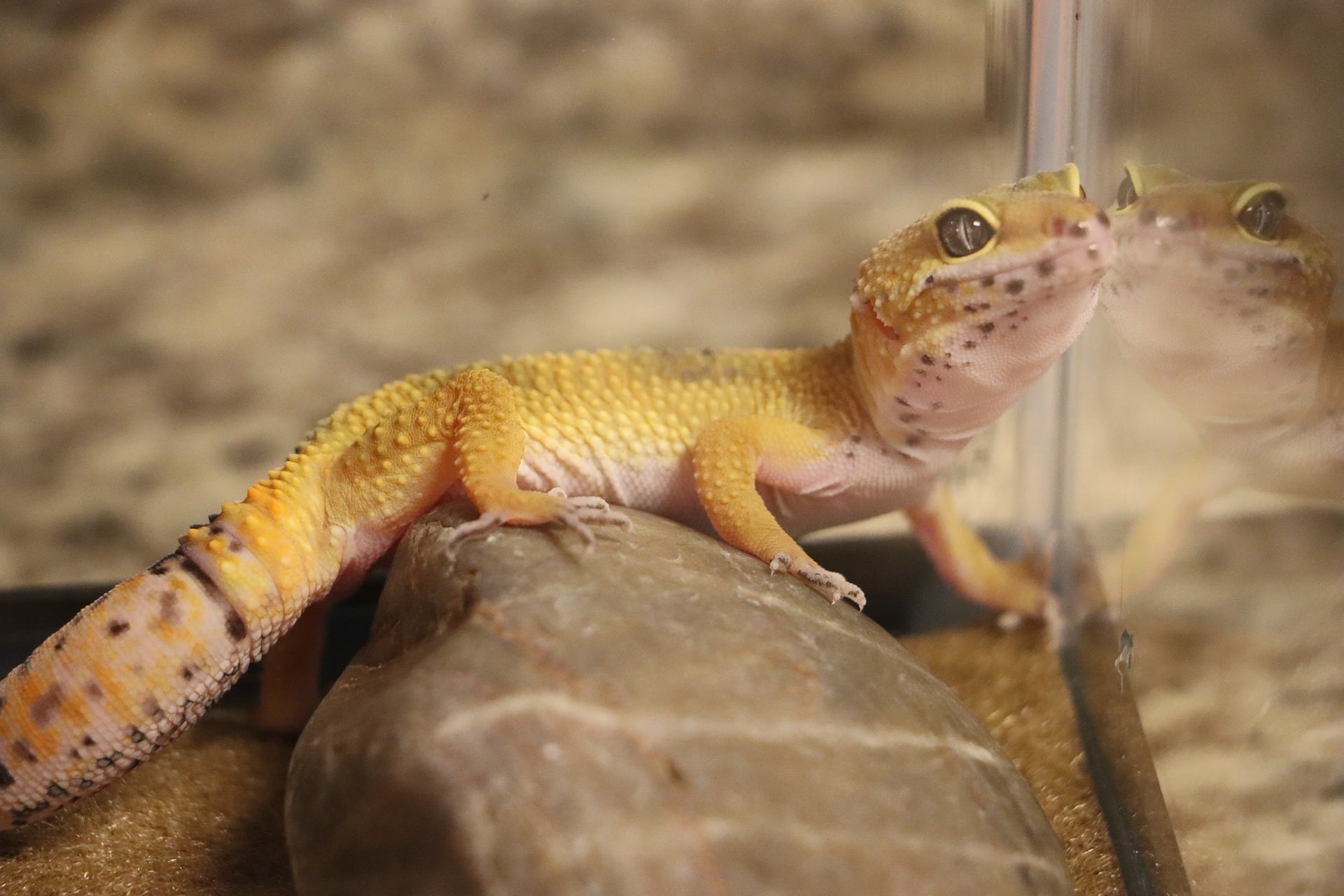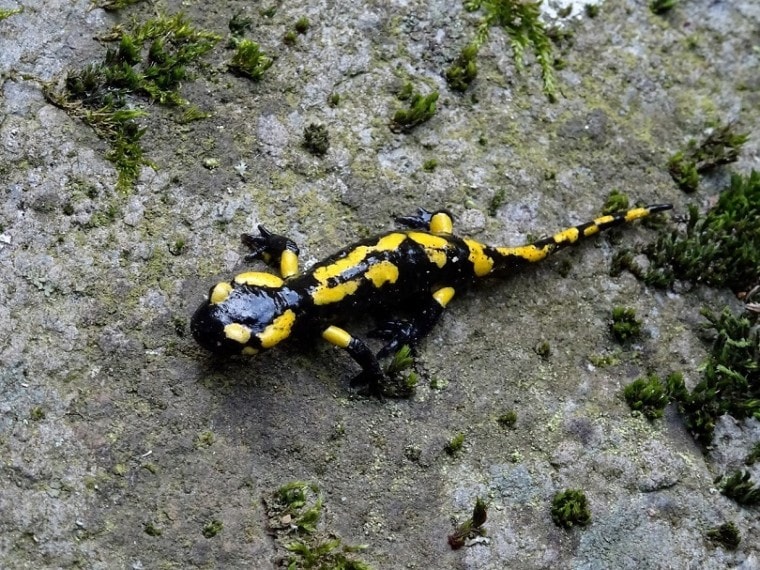
Salamanders and newts are fascinating animals that can be found in a variety of places. Many people find them in the wild and are immediately attracted to their cute and unique appearance. However, these creatures are not pets for beginners. They have complex care needs, and in many instances, it’s neither legal nor ethical to remove an animal from the wild to keep as a pet.
It’s essential that you understand the care needs of these animals and the laws about ownership in your area before attempting to keep salamanders or newts as pets.
What Are Salamanders and Newts?
Wildlife organizations strongly discourage keeping newts or other salamanders as pets, as they do not do well when kept as pets. The content in this article is for informational purposes only. At PetKeen, we do not encourage adopting salamanders or newts. In addition, we do not encourage capturing wild animals, as this disrupts local ecosystems.
Salamanders and newts are amphibians, which means they spend part of their lives in water and part of their lives on land, although there are a few exceptions to this. Interestingly, all newts are salamanders but not all salamanders are newts. This is because the word “salamander” refers to an entire group of animals of which newts are a part. Salamanders are distinguished by having tails as adults, which is different from other amphibians like frogs and toads.
Newts are distinguished as salamanders that spend most of their lives on land, and they typically have dry, bumpy skin. There is another group of salamanders known as sirens, defined by the presence of both lungs and gills, many of which never fully develop beyond their aquatic larval stage. Axolotls, hellbenders, and mudpuppies are good examples of sirens. To make things even more confusing, there are a few species of salamander that have neither lungs nor gills when fully developed, instead breathing through their skin. Examples of these animals are the arboreal salamander and California slender salamander.
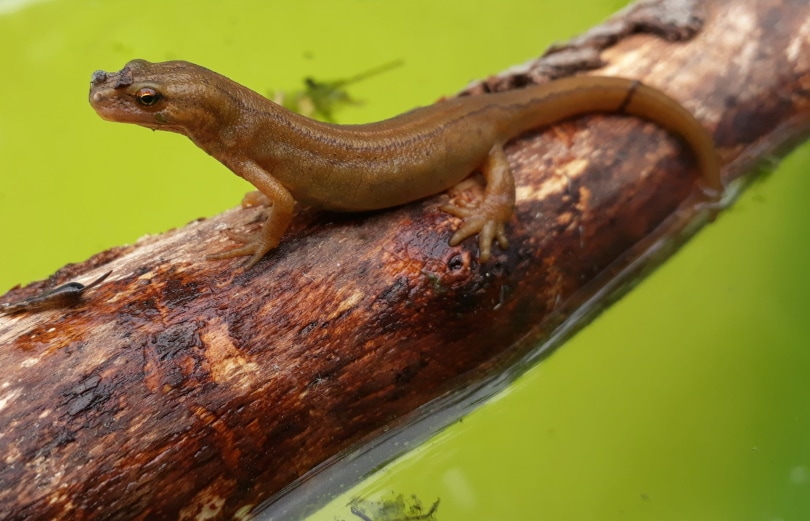
Do Salamanders Make Good Pets?
If you are interested in keeping a pet that you can simply observe, then salamanders make good pets. They are not animals that enjoy interacting with humans, though, and very few salamanders will appreciate being regularly handled. They do not make cuddly pets, but they can be a lot of fun to watch as they interact with their environment.
The biggest issues associated with keeping salamanders as pets are their complex care needs that can vary significantly between species. Many people don’t fully understand the complex dietary and environmental needs these animals can have. When kept improperly, the lifespan of these animals can be significantly shortened. While most salamander species will live for around 10 years with proper care, some can exceed 40 years in age, so providing a long-term commitment to appropriate care is necessary to maintain the health and longevity of them.
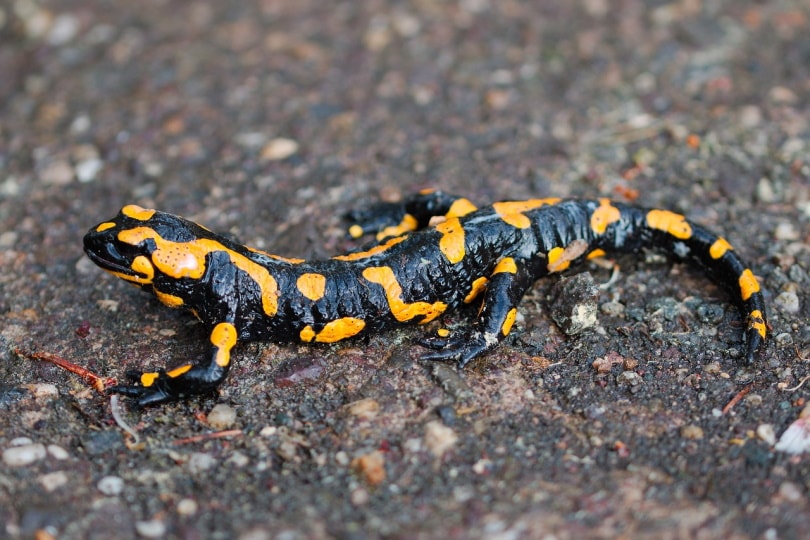
Concerns With Taking Wild Animals
Taking salamanders from the wild is ethically a poor choice, even if you are aware of the needs of the animal. Removing wild animals from their natural environment is not only frowned upon, but it can also negatively impact the natural environment by altering the balance of species in the environment. Salamanders are predators that can eat a variety of creatures depending on their environment, including snails, slugs, fish, earthworms, crayfish, and mice. By removing predators from the environment, it can lead to an imbalance of both prey and predatory species.
On top of being unethical, it is also illegal to take species from the wild in many areas. In fact, it’s illegal to even own captive-bred salamander species in some areas. In the US, there are over 200 species of salamanders that are illegal to import or transport across state lines. This is because of the devastating impact that wild catching can have on the natural environment, as well as the devastating impact of releasing non-native species into the wild from pet homes.
Unless you are a certified wildlife rehabber with appropriate licensure for your state, you should never remove salamanders from the wild. You should also never release an animal that has been under human care into the natural environment, especially if it is not a native species.
The 5 Commonly Kept Salamanders
1. Axolotl
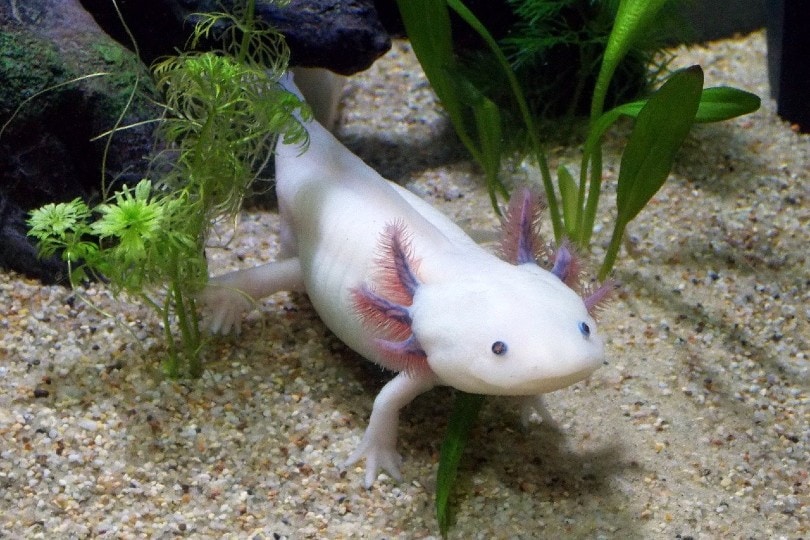
This siren salamander species rarely leaves its larval stage, which means that it lives in water most of its life. As a siren, axolotls have both gills and lungs. They can become fully terrestrial in rare instances, but it’s extremely unusual for this to naturally occur. They require cold water that can be difficult to achieve in a home aquarium without a chiller. Since this is an endangered species, there are some major restrictions on the transportation and ownership of them in some areas.
2. Fire Salamander

These beautiful salamanders have bright orange spots on a black background. They can grow to 12 inches in length. They are one of the more beginner-friendly salamander species due to their relatively easy care needs in the world of amphibians. They enjoy eating earthworms and can live on a variety of damp substrates.
3. Marbled Salamander

These salamanders have shorter limbs and thicker bodies than most salamanders do. They have lovely marbled gray markings on their black bodies. They reach around 5 inches in length and love burrowing, so they need an enclosure that supports their burrowing needs. You may also see them referred to as mole salamanders.
4. Slimy Salamander

Slimy salamanders are small salamanders that are covered in a thick, sticky coating that may come off on your hands if you handle them. They are relatively easy-care salamanders that require small enclosures. They eat small invertebrates, like worms and crickets. They are shy salamanders that spend a lot of time hiding.
5. Spotted Salamander

These cute salamanders can reach up to 10 inches in length and they have bright-colored spots on their bodies. They are extremely popular with the people who keep them, but they are one of the less commonly kept species of pet salamanders.
Protected Species of Salamanders
Around half of the species of salamanders in the world live in the United States, so there are a huge number of species here. Of those species, a large number of them are protected. Currently, there are over 40 species of salamander in the US that are listed as vulnerable, endangered, or critically endangered. Habitat loss, the introduction of invasive species, and disease are all significant threats to our salamanders.
Included on the list of protected salamander species are Eastern hellbenders, Georgetown salamanders, Salado salamanders, Shasta salamanders, Neuse River waterdog salamanders, California tiger salamanders, and Flatwoods salamanders.
Summary
While salamanders and newts can make good pets for the right person, they are not ideal pets for the vast majority of people. They have special needs that many people are unprepared for when they bring them home, often leading to shortened lifespans.
It’s also important to understand that taking salamanders from the wild is illegal in many areas and generally considered to be unethical, so it’s important to know you are acquiring salamanders from reliable sources that are not illegally or unethically obtaining their animals.
Featured Image Credit: Mingo123, Pixabay


